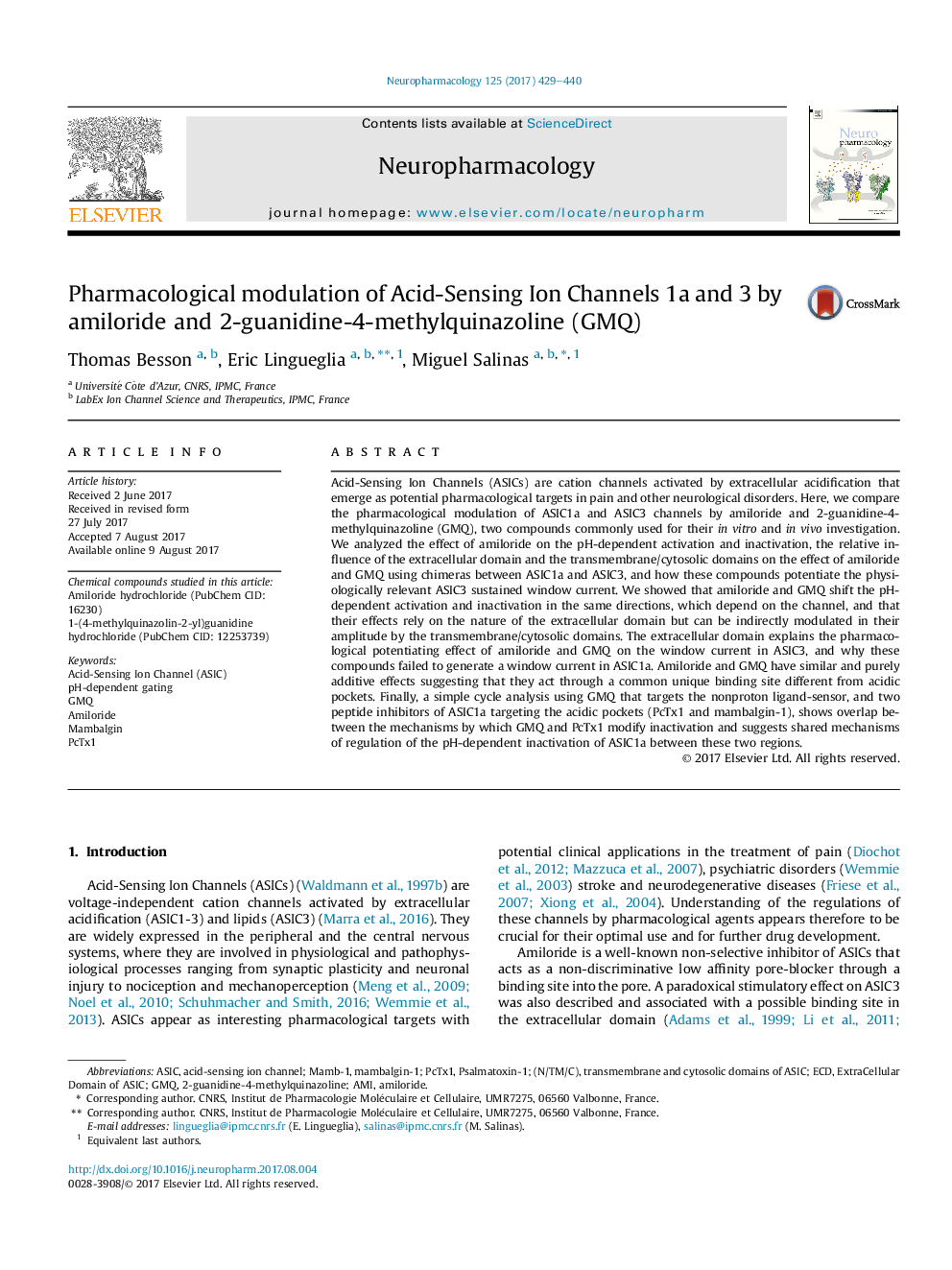| کد مقاله | کد نشریه | سال انتشار | مقاله انگلیسی | نسخه تمام متن |
|---|---|---|---|---|
| 5548835 | 1556592 | 2017 | 12 صفحه PDF | دانلود رایگان |

- First direct comparison of the effect of amiloride (AMI) and GMQ on ASICs.
- Gating regulation by AMI and GMQ depends on the nature of the extracellular domain.
- The transmembrane/cytosolic domains modulate the pharmacological regulation of ASICs.
- Additive effect of AMI and GMQ fits well with a common unique binding site.
- Mechanisms of gating regulation by GMQ & PcTx1, but not mambalgin, partially overlap.
Acid-Sensing Ion Channels (ASICs) are cation channels activated by extracellular acidification that emerge as potential pharmacological targets in pain and other neurological disorders. Here, we compare the pharmacological modulation of ASIC1a and ASIC3 channels by amiloride and 2-guanidine-4-methylquinazoline (GMQ), two compounds commonly used for their in vitro and in vivo investigation. We analyzed the effect of amiloride on the pH-dependent activation and inactivation, the relative influence of the extracellular domain and the transmembrane/cytosolic domains on the effect of amiloride and GMQ using chimeras between ASIC1a and ASIC3, and how these compounds potentiate the physiologically relevant ASIC3 sustained window current. We showed that amiloride and GMQ shift the pH-dependent activation and inactivation in the same directions, which depend on the channel, and that their effects rely on the nature of the extracellular domain but can be indirectly modulated in their amplitude by the transmembrane/cytosolic domains. The extracellular domain explains the pharmacological potentiating effect of amiloride and GMQ on the window current in ASIC3, and why these compounds failed to generate a window current in ASIC1a. Amiloride and GMQ have similar and purely additive effects suggesting that they act through a common unique binding site different from acidic pockets. Finally, a simple cycle analysis using GMQ that targets the nonproton ligand-sensor, and two peptide inhibitors of ASIC1a targeting the acidic pockets (PcTx1 and mambalgin-1), shows overlap between the mechanisms by which GMQ and PcTx1 modify inactivation and suggests shared mechanisms of regulation of the pH-dependent inactivation of ASIC1a between these two regions.
Journal: Neuropharmacology - Volume 125, October 2017, Pages 429-440